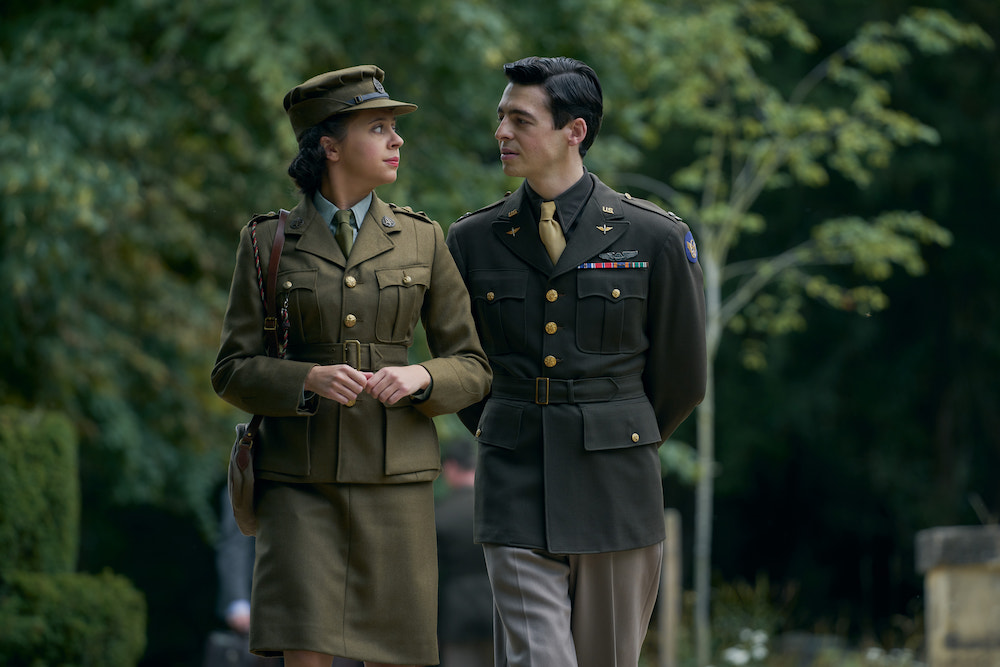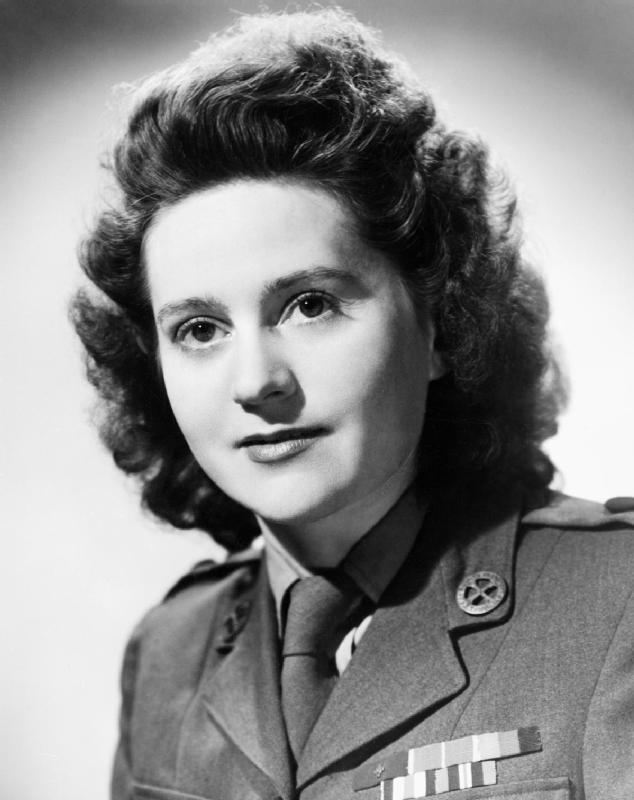Apple TV+’s ‘Masters of the Air’ follows the true story of the 100th Bomb Group of the US Air Force and their exploits in the Second World War. The story is about the bravery and perseverance of the men who go through a range of experiences, in the air as well as on the ground, while fighting for their country and trying to stop the fascist forces from taking over Europe. While the show is mainly focused on the 100th, it also deviates a bit into the arcs of other characters, who come in touch with the members of the 100th at one point or another. Sandra Wesgate is one of them. Considering that the show is based on a true story with almost all characters being real people, one wonders about the story behind Sandra. SPOILERS AHEAD
Sandra Wesgate is Inspired by the Women Who Served During WWII
Sandra Wesgate enters the picture when Major Harry Crosby is sent to a conference of the Allies, where he is roomed with a subaltern, A.M. Wesgate. He thinks it would be another man but is shocked to find it’s a woman. This really happened with Crosby, though in real life, she was named Landra Wingate. The show presents an accurate picture of Crosby and her time together, including her mysterious job and Crosby’s internal conflict of feeling more connected to her than his wife, Jean, following his experiences in the war.

In the show, as Crosby and Sandra become friends, it also becomes clear that she knows more about him than he knows about her. For starters, when he asks her what she does, she says she is a punter. Sandra remains coy about her whereabouts, and this further adds to the mystery. The only thing that Crosby knows is that she is a junior officer in the British military. He has no idea whether she serves in the land, air, or naval forces. While it is understood that both of them are expected to keep their real work and their missions a secret, somehow, it turns out that her work is more secretive than his. And here’s why.
While Sandra doesn’t talk about it with Crosby, it’s an educated guess that says that she belongs to the SOE (Special Operations Executive) branch of British intelligence. Created by Churchill during World War II, the SOE was founded to spread British special agents across the enemy territory. They were basically spies who were specifically trained to help the resistance forces in the Nazi-occupied territories, working as couriers and radio operators, among other things. And a bunch of them were women.
While women were not allowed to serve in the military at that point, their importance in covert work couldn’t be understated. Women were considered seemingly harmless and were less likely to be paid attention to, which made them inconspicuous and, hence, invaluable for SOE work. Their training required them to have mastery over some technical elements while also learning unarmed combat. They were also asked to be fluent in the language of the place where they would be planted. If they were to work with the French resistance, they had to speak like someone who had lived their entire life in France. They were also trained to stand the horrors of interrogation by the Gestapo, how to keep their secrets to themselves under an obscene amount of pressure, and were even given suicide pills in case things seemed too far gone.

The names of women like Odette Sansom and Noor Inayat Khan come to mind while talking about the SOE. Odette, who served as the inspiration for the 1950 film of the same name, worked with the French resistance in Cannes, where she was heavily involved with their operations. When she was caught, she survived interrogation and was sent to the Ravensbrück concentration camp, which she only escaped after the Allied forces liberated the camp.
Khan, on the other hand, wasn’t so lucky. She worked as a radio operator in France, and when she was arrested after being betrayed by a local, she went through severe interrogation, but she didn’t break. She tried to escape several times, but in the end, she was sent to Dachau, where she was executed. Her story is portrayed in the 2019 film ‘A Call to Spy.’ Both Sansom and Khan (posthumously) were awarded the George Cross, becoming the first women to receive Britain’s highest bravery award for civilians.
It is expected that Landra Wingate was also involved in such missions, as shown in the TV series. However, Crosby himself had no idea what she was up to when they were apart. He guessed that she might be involved in intelligence work, but there was nothing he knew beyond that. Like in the show, Crosby and Landra parted ways by the end of the war. His trip home to America helped him get some perspective on his marriage, and when he returned to England, it was clear to him and Landra that their time together was over. Crosby revealed in his book, ‘A Wing and a Prayer,’ that the last time he saw her, she told him she was in a relationship with “a nice American at her office,” and it was easier with him because he was unmarried, unlike Crosby. It seems Landra Wingate preferred to lead a life away from the public limelight, and her fate after the war remains unknown, but the show shines a light on her work and that of many women like her during the uncertain times of the war.
Read More: What Happened to Benny DeMarco and Harry Crosby in Real Life?


You must be logged in to post a comment.